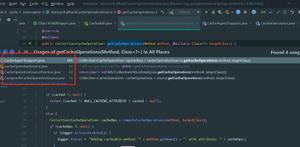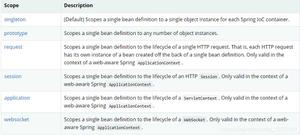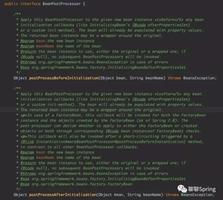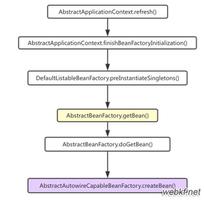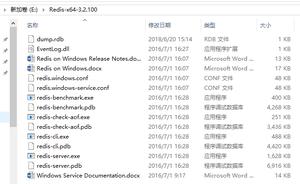在不同环境下定义Spring bean的通用策略
定义一堆bean的常见策略是什么,在开发和生产环境中使用的策略不同?
假设我有2个bean,每个bean实现相同的接口。一个bean充当本地文件系统的抽象,另一个连接到分布式文件系统。为了保持开发的稳定,开发环境应使用本地文件系统实现,生产发行版应使用分布式文件系统bean。
目前,我正在做的是两个xml定义。
native.xml
<bean id="resourceSystem" class="com.cust.NativeResourceSystem" />分布式.xml
<bean id="resourceSystem" class="com.cust.HadoopResourceSystem"> <constructor-arg name="fs" ref="hdfs" />
</bean>
创建应用程序上下文时,我忽略了一个native.xml或distributed.xml根据环境而定,并获取了resourceSystembean。
Spring中是否有适当的工具或最佳实践来为不同的环境配置bean定义?
谢谢。
回答:
Spring参考文档介绍了有关PropertyPlaceholderConfigurer的内容
PropertyPlaceholderConfigurer不仅会在你指定的Properties文件中查找属性,而且还会在Java System属性中检查其是否找不到你要使用的属性。
如上所示,你可以设置一个Java System属性
在开发机器上
-Dprofile=development在生产机器上
-Dprofile=production因此,你可以定义全局应用程序上下文设置,如下所示导入每个分层的上下文设置
<?xml version="1.0" encoding="UTF-8"?><beans xmlns="http://www.springframework.org/schema/beans"
xmlns:context="http://www.springframework.org/schema/context"
xmlns:xsi="http://www.w3.org/2001/XMLSchema-instance"
xsi:schemaLocation="http://www.springframework.org/schema/beans
http://www.springframework.org/schema/beans/spring-beans-2.5.xsd
http://www.springframework.org/schema/context
http://www.springframework.org/schema/context/spring-context-2.5.xsd">
<context:property-placeholder/>
<import resource="service-${profile}.xml"/>
<import resource="persistence-${profile}.xml"/>
<import resource="security-${profile}.xml"/>
</beans>
请记住,所有位置路径都相对于进行导入的定义文件
因此,Spring支持这种配置。
通常,最好为此类绝对位置保留一个间接寻址,例如,通过在运行时针对JVM系统属性解析的 “ $ {…}”占位符。
以上是 在不同环境下定义Spring bean的通用策略 的全部内容, 来源链接: utcz.com/qa/415292.html



